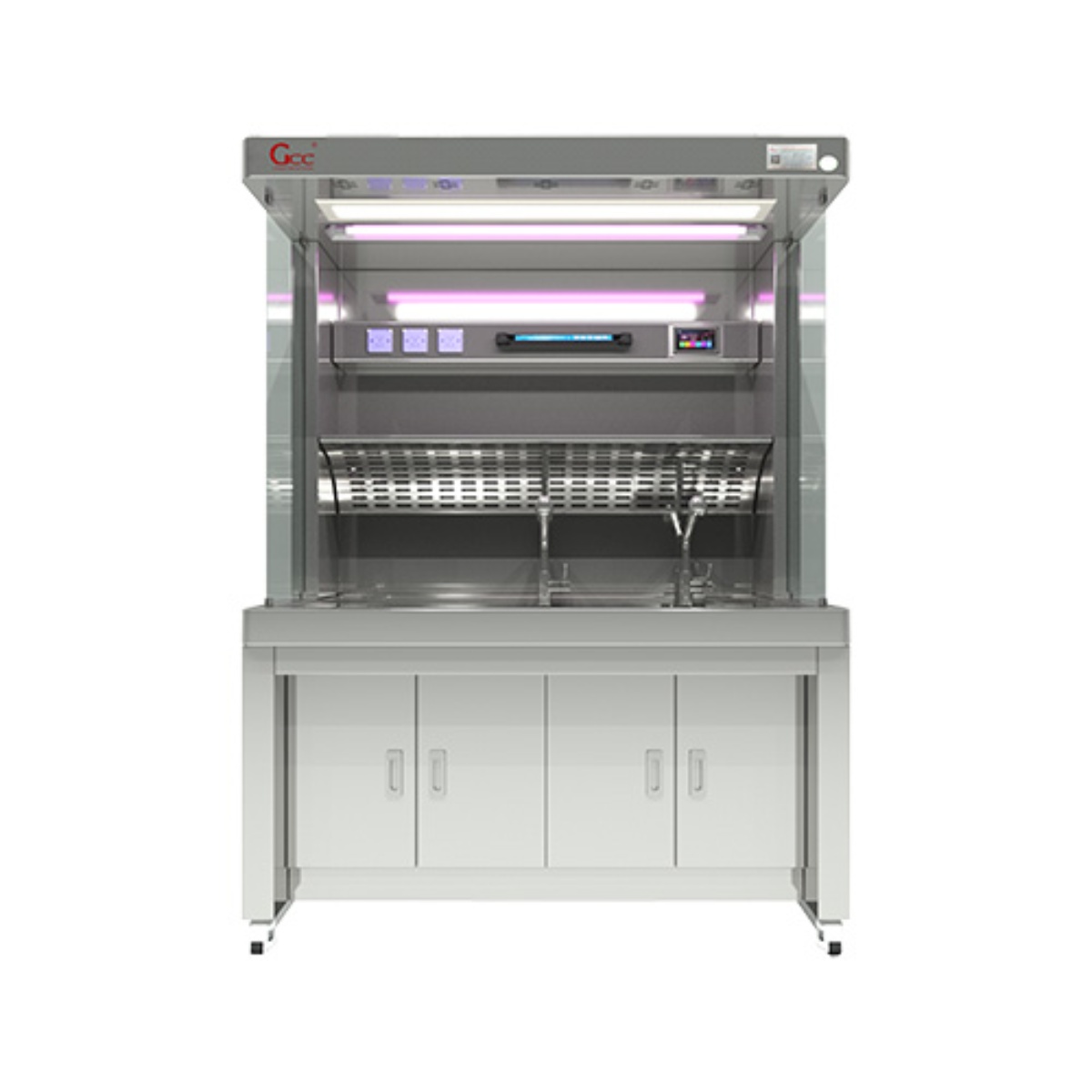Grossing Station Guide: Working Principles, Safety Features & Maintenance Protocols
Explore the engineering behind pathology grossing stations. Learn how airflow systems protect technicians, ensure specimen integrity, and meet ISO 14644 standards with proper maintenance.
Introduction to Grossing Station Technology
In contemporary anatomical pathology laboratories, the grossing station represents a critical engineering solution that merges biosafety protocols with ergonomic design principles. Consequently, these specialized workstations serve as the primary interface between surgical specimens and pathological analysis, providing a controlled environment for the macroscopic examination and dissection of tissue samples.
Core Definition: Essentially, a grossing station is an engineered containment system that protects laboratory personnel from exposure to biological hazards, chemical vapors, and particulate matter during the gross examination process, while simultaneously maintaining specimen integrity and preventing cross-contamination.

Engineering Principles and Aerodynamic Design
Laminar Airflow Dynamics
The fundamental operating principle relies on precisely controlled laminar airflow patterns. Initially, ambient air undergoes primary filtration before passing through HEPA (High-Efficiency Particulate Air) filters, which achieve 99.99% efficiency at 0.3 micrometers. Subsequently, the system directs this purified air in a vertical, unidirectional flow across the work surface.
Moving beyond basic airflow, the containment mechanism plays an equally crucial role…
Containment Mechanism
A critical front inflow air curtain maintains constant negative pressure differential, typically at 0.4-0.6 m/s face velocity. As a result, this aerodynamic barrier effectively contains aerosols and chemical vapors generated during dissection, directing them away from the operator and into the exhaust filtration system.
Furthermore, the filtration system incorporates multiple layers of protection…
Filtration Architecture
Modern grossing stations employ multi-stage filtration systems comprising pre-filters for large particulates, primary HEPA filters for sub-micron particles, and in ductless models, additional chemical filtration media for formaldehyde and other volatile organic compounds.
Structural Composition and Material Science
Work Surface Engineering
The dissection deck typically features 304 or 316L grade stainless steel, which manufacturers select for its exceptional corrosion resistance, non-porous characteristics, and compatibility with harsh chemical disinfectants. Moreover, the surface often incorporates integrated sinks, graduated scales, and specimen containment features.
In addition to the work surface, the cabinet construction demands equal attention…
Cabinet Construction
Structural components utilize powder-coated carbon steel or stainless steel frameworks, which designers create for long-term durability and chemical resistance. Meanwhile, transparent safety glass or polycarbonate sashes provide optical clarity while maintaining the containment envelope.
Additionally, modern stations integrate numerous advanced features…
Integrated Systems
Advanced stations incorporate task-appropriate lighting exceeding 1000 lux, foot-operated controls, electrical outlets for ancillary equipment, vacuum aspiration systems, and digital instrumentation for environmental monitoring.
Technical Specifications and Performance Metrics
| Parameter | Standard Specification | Performance Significance |
|---|---|---|
| Face Velocity | 0.4 – 0.6 m/s | Ensures containment of hazardous aerosols |
| Downflow Velocity | 0.3 – 0.5 m/s | Maintains laminar flow over work surface |
| HEPA Filtration | 99.99% @ 0.3 μm | Removes particulate contaminants |
| Noise Emission | < 65 dBA | Maintains comfortable working environment |
| Work Surface Illumination | > 1000 lux | Ensures adequate visualization |
| Power Consumption | 0.5 – 1.5 kW | Varies with cabinet size and features |
Operational Protocols and Regulatory Compliance
International Standards Conformance
Grossing station installation and operation must adhere to multiple international standards including ISO 14644 for cleanroom environments, GMP guidelines for quality assurance, and relevant biosafety level (BSL-2) requirements for handling potentially infectious materials.
Beyond initial compliance, ongoing certification ensures continued safety…
Certification Requirements
Initial installation and periodic recertification (typically annual) must verify airflow velocities, HEPA filter integrity, containment efficiency, and alarm system functionality. Therefore, documentation of these validations becomes essential for regulatory compliance and quality audits.
Moreover, proper operational practices complete the safety picture…
Operational Best Practices
Proper workflow organization, minimization of rapid movements, appropriate personal protective equipment, and pre-use operational checks constitute essential elements of safe grossing station operation. Accordingly, all procedures should appear in standardized operating procedures.
Maintenance Protocols and Quality Assurance
Preventive Maintenance Schedule
- Daily: Surface decontamination with appropriate disinfectants; functional checks of airflow monitors
- Weekly: Inspection and cleaning of pre-filters; verification of lighting and utility functions
- Monthly: Comprehensive cleaning of interior surfaces; calibration of monitoring instruments
- Annual: Full performance certification; HEPA filter integrity testing; motor and blower inspection
Specifically, filter management requires careful attention…
Filter Management
Pre-filters require regular inspection and replacement based on pressure differential readings. Technicians should replace HEPA filters when pressure drop exceeds manufacturer specifications or when integrity testing demonstrates failure. Importantly, filter changes necessitate prior decontamination of the cabinet interior.
Finally, comprehensive documentation supports all maintenance activities…
Documentation and Record Keeping
Maintenance activities, filter replacements, certification reports, and any operational incidents require meticulous documentation. Consequently, this documentation provides evidence of compliance during regulatory inspections and supports continuous quality improvement initiatives.
Conclusion: The Evolving Role in Pathology Practice
The modern grossing station represents a sophisticated integration of engineering principles, material science, and biosafety protocols. As pathology laboratories increasingly process complex specimens and face heightened regulatory scrutiny, these workstations provide the necessary infrastructure to ensure operator safety, specimen quality, and procedural standardization. Ultimately, ongoing technological advancements continue to enhance their functionality, incorporating digital imaging capabilities, improved ergonomics, and smarter monitoring systems to support the evolving needs of contemporary pathology practice.